August Macro Matters
Having endured the heatwave for quite a while now it is refreshing to see the rain return if only for a short while; the plants and landscape could do with a drink. This month, I have been working on the coast, photographing creatures in rockpools and the shoreline in general. I thought it would be a change to illustrate some of these often forgotten creatures that exist in the intertidal zone.
Exploring the seashore, no matter where you live offers tremendous scope for any photographer interested in the world of close-up photography. Unlike a typical terrestrial habitat, the creatures that exist on the seashore are distinctly different from any land-based organism. Despite its popularity for landscape photography, life on the seashore is one of the least photographed parts of this remarkable ecosystem. The diversity of habitats are amazing and they provide shelter for an astonishing number of organisms.

Blue Mussel Mytilus edulis
The Blue Mussel is also known as the Common Mussel. It’s an edible bivalve mollusc frequently found on beaches
just about everywhere. They are often seen in large clumps occupying the surfaces of rocks at low tide.
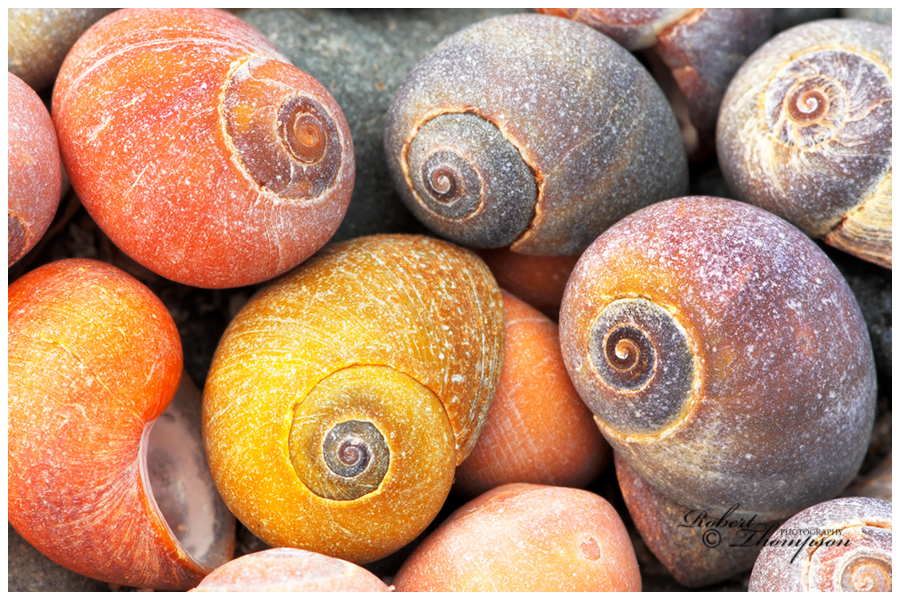
Smooth Periwinkle Littorina littoralis
The largest species of Perwinkle in the British Isles. It is often seen in numbers on rocky coasts from the
upper shoreline to the sublittoral zone.

Crumb-of-bread Sponge Hymeniacidon perlevis
There are many species of sponges that occur around the British Isles. They are multicellular organisms with pores that allow the water
to circulate through them. They are frequently found on the underside of boulders.
Seashore photography revolves around the tide, which brings its own challenges. The environment is not always conducive to photography also, the saltwater is harmful to your equipment. The most productive tides for photography are spring tides; they have the greatest variation between high and low water. Neap tides have the least variation between high and low water and are therefore less productive. Spring tides occur throughout all of the seasons and are not confined to spring as their name would imply; although some of the lowest tides occur during the spring and autumn equinoxes.
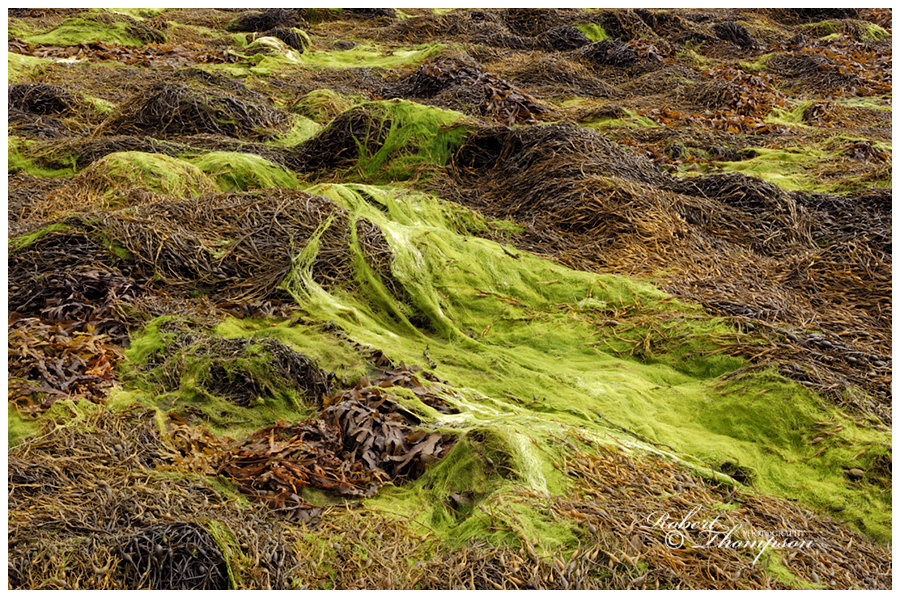
Knotted Wrack Ascophyllum nodosum + Ulva intestinalis
One of the most common seaweeds which occurs on rocky, sheltered shorelines. It has long strap-like frons
with conspicuous egg-like bladders which makes it easy to identify.
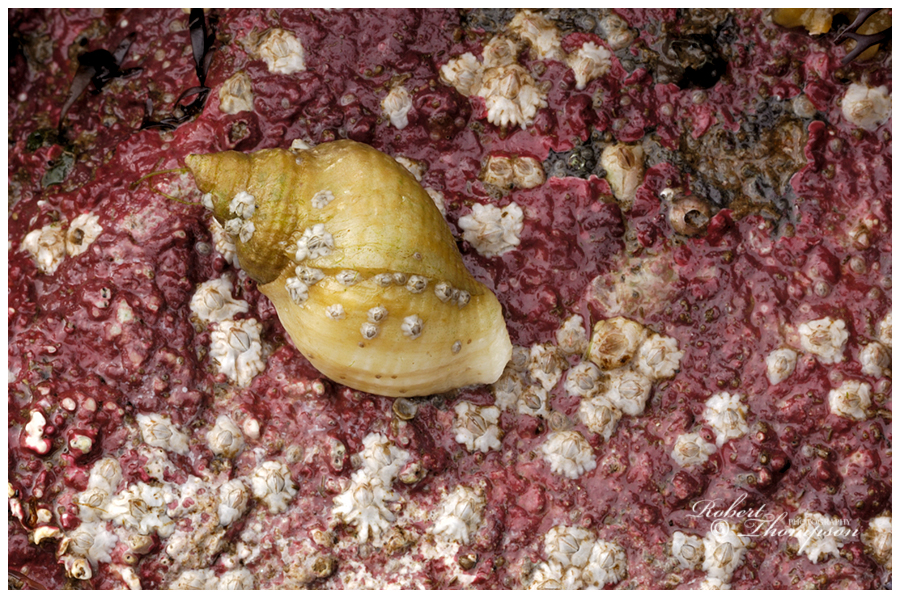
Dog Welk Nucella lapillus
A conical shell mollusc that is widespread and frequently seen on rocky shores around the British Isles. The colour
of the shell is variable, often yellow or brown with spiral banding.
During a large spring tide, more of the shore bottom is exposed revealing many other animals and plants that would not normally be seen at any other time of the year. The whole tidal cycle has a controlling effect on the creatures that live on the shoreline. The animals and seaweeds which can withstand greater exposure and drying out between tides are to be found in the upper regions of the shore, while those that cannot are restricted to the lower parts, usually hiding under boulders, stones and seaweeds to prevent drying out. These are the ideal places to look for subjects.
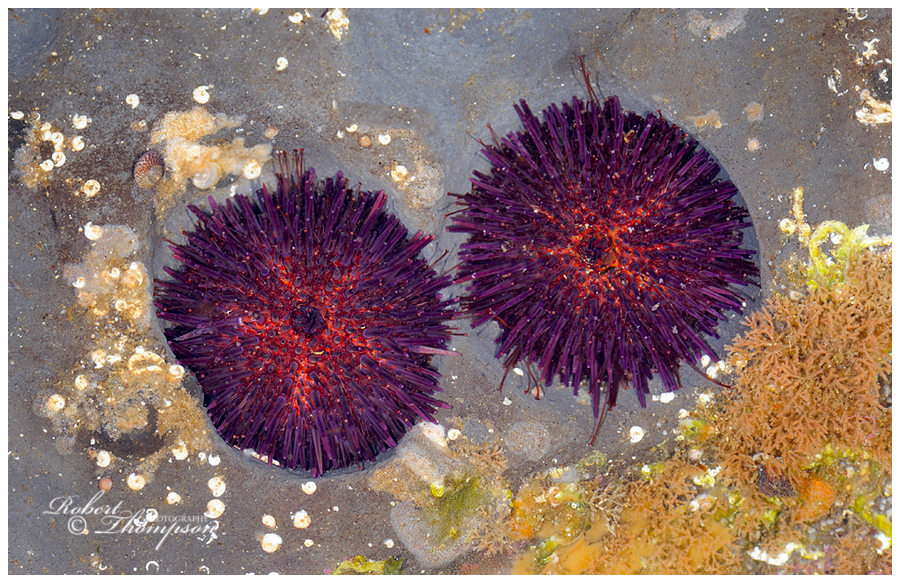
Purple Sea Urchin Paracentrotus lividus
A beautiful sea urchin that is occasionally found in rockpools. The urchins actually create cavities in the soft rock, which you can
clearly see in the photograph. It is more frequently encountered in the west of Ireland along the Atlantic coastline.
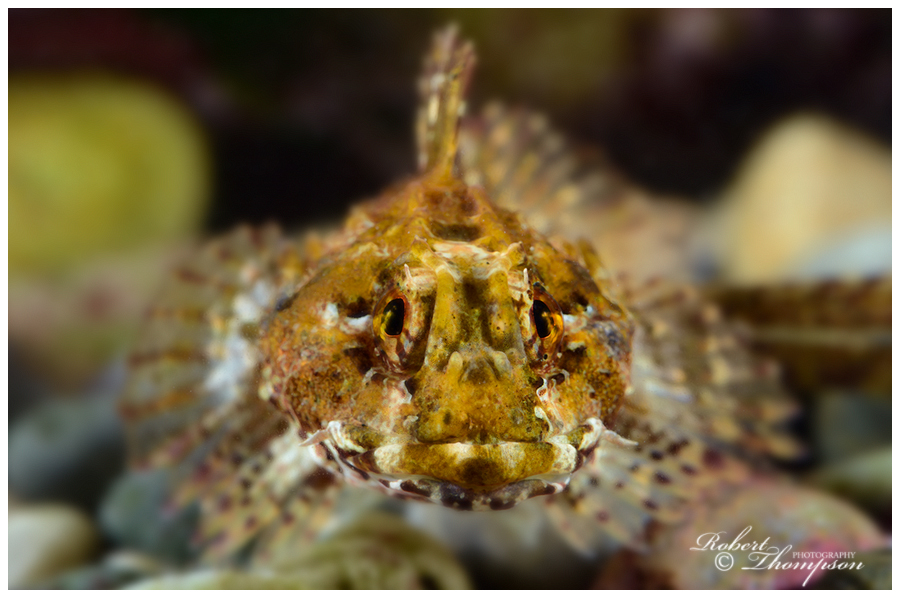
Long-spined Sea Scorpion Taurulus bubalis
A fierce predator that inhabits rocky shores with a large head and eyes tapering down towards the tail. It is a master
of camouflage being able to change colour to blend seamlessly with its surroundings.
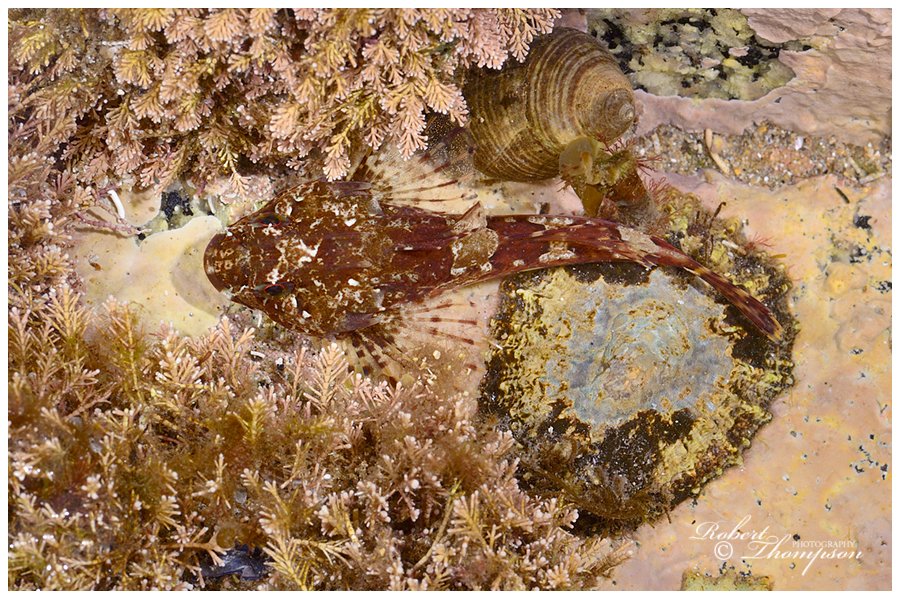
Scorpion Fish Taurulus bubalis
The main challenge of working on the seashore is the changing cycle of the tides, which can often mean very early starts, or working late into the evening at particular times of the year. Planning and researching an area in advance is essential for this type of photography; you don’t just turn up and leave everything to chance. Checking the tide times for low water in your area is a must, or you run the risk of a wasted journey. You also need to be there well before low water and work your way down the shoreline with the receding tide. The most interesting and productive part is the area at the low water line. The seashore is not a static environment, but one in a constant state of flux.
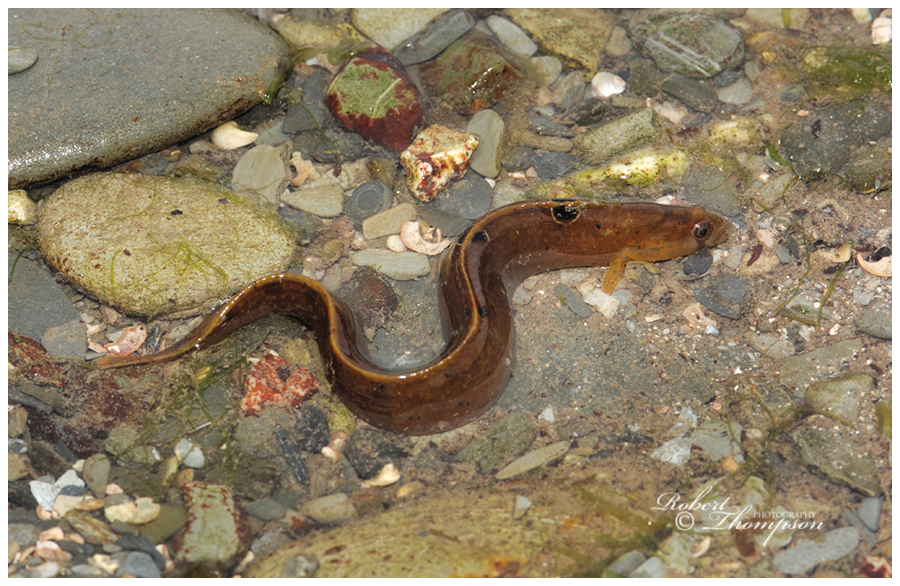
Butterfish Pholis gunnellus
This distinctive species is commonly encountered frequently in rockpools throughout the British Isles.
The conspicuous black spots on the back make it easy to identify.
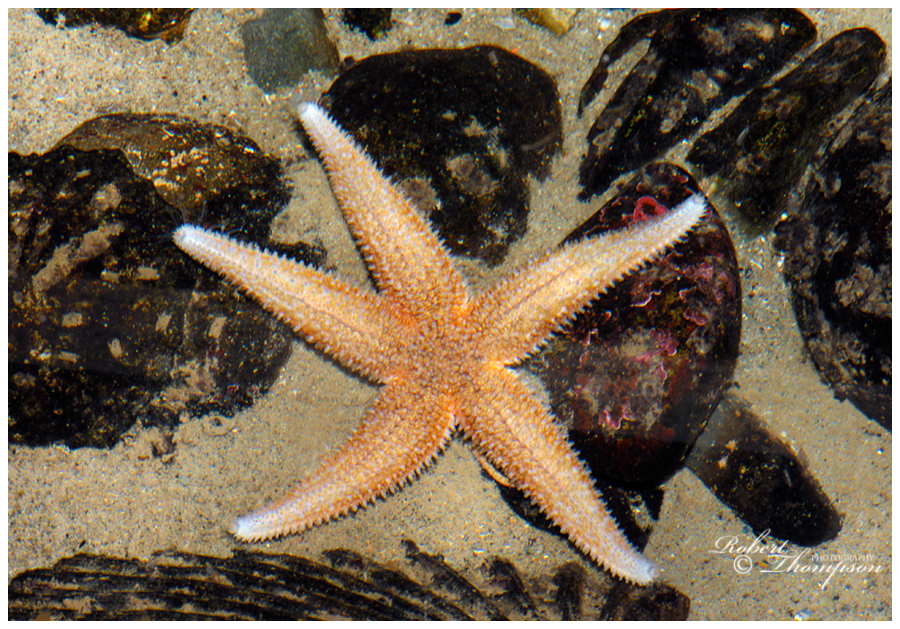
Common Starfish Asterias rubens
The most frequently encountered starfish around the coast. It can vary in colour, although it is normally
orange or occasionally pale brown. It inhabits rockpools and hides under boulders at low tide.
The shore can be a challenging environment to work in, the weather is not always sympathetic, your equipment is exposed to more hazards than normal; drop a lens or a flash unit here, and it is likely to be a write-off! Perhaps these are some of the reasons, along with a limited knowledge of the marine environment that makes it less popular among macro photographers.
Rockpools are something special that appeals to people of all ages. They are fascinating environments and are the ocean’s portholes, or mini aquariums allowing us a glimpse into a microcosmic world of exquisite beauty. These natural aquariums exist in all manner of shapes, sizes and depths. Those pools that are close to the high water line are largely unsuitable – many suffer large fluctuations in temperature and usually contain little in the way of interesting subject material. Also, pools at the end of the shoreline, (although rich with marine life) are generally cluttered with seaweeds and too deep to be useful photographically. The small, shallow pools, which lie in the middle, or near the lower shoreline that are the most interesting photographically.

Beadlet Anemone Actinia equina
A colourful species often seen in good numbers on rocky shores and rockpools. Adults attach themselves
to stones or hard rock surfaces. Some species can have as many as 192 tentacles.
The tentacles retracted if it’s disturbed. It varies in colour from red to green and orange.
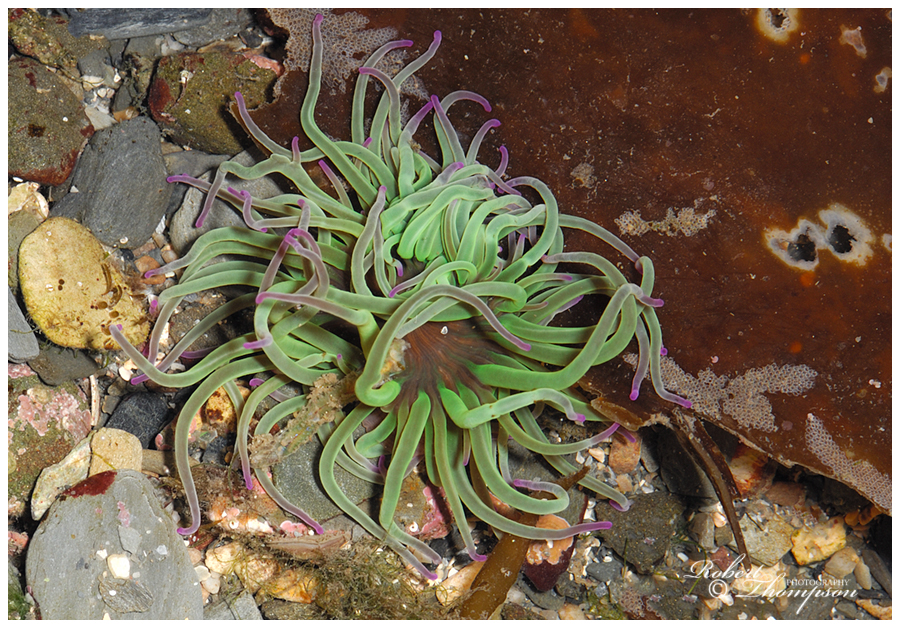
Snakelocks Anemone Anemonia viridis
One of the most colourful anemones with long, flexuous tentacles, which can vary in colour from brown to light green with a purple tip.
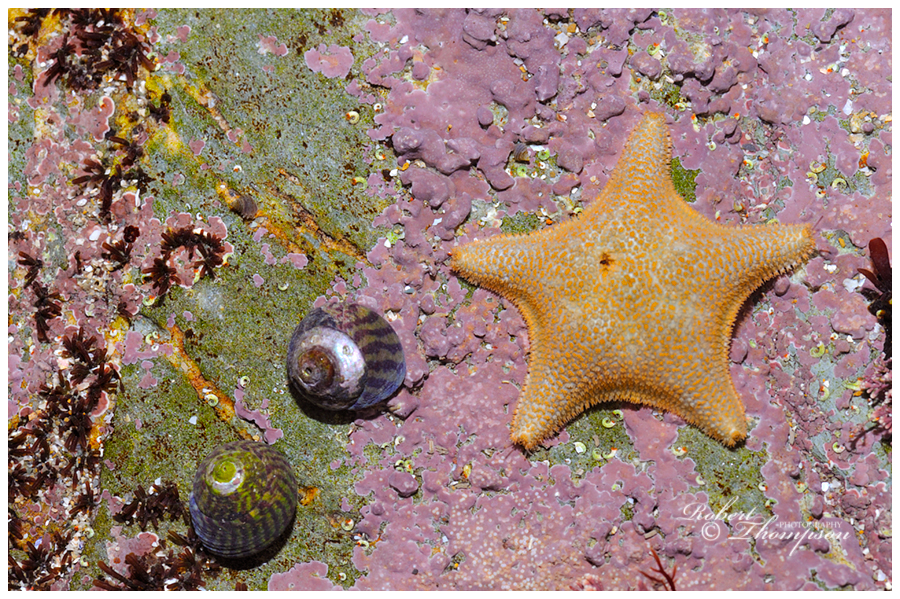
Cushion Star Asterina gibbosa
A small colourful little starfish with short stiff spines. It is found under boulders and stones
on the lower shore and occasionally in rockpools.
If you are photographing in rockpools, then here are some important points to consider. First of all, the welfare of the creatures that inhabit the rockpools take precedence over getting the photos at any cost. Rockpools are fragile environments, even when exercising due care delicate organisms are still easily damaged. Keep disturbance in the pool to a minimum. When turning over stones on the shore always replace them in the same position. Many organisms attached to the underside of the rock would become stressed, or even die if left exposed for any length of time. The majority of your subjects naturally look their best when in water, but not every subject that you may find among the stones belongs or inhabits a rock pool. It is a good idea to start with some of the common occupants such as anemones, starfish and crabs, etc.; this also provides the opportunity to experiment and polish your techniques. We can all at times get enthusiastic and carried away, but be mindful of your time with subjects as they can become stressed if being handled for long periods. Always keep in mind as nature photographers, we have a duty of care, and the welfare of the subject comes first. Animals, which show signs of stress, will always be apparent to those who understand their biology and ecology.

Sea Cauliflower Leathesia difformis
A brown alga that is is found occasionally in rockpools usually attached to rocks or other seaweeds in the intertidal range.
Individuals can grow up to 15cm in diameter.
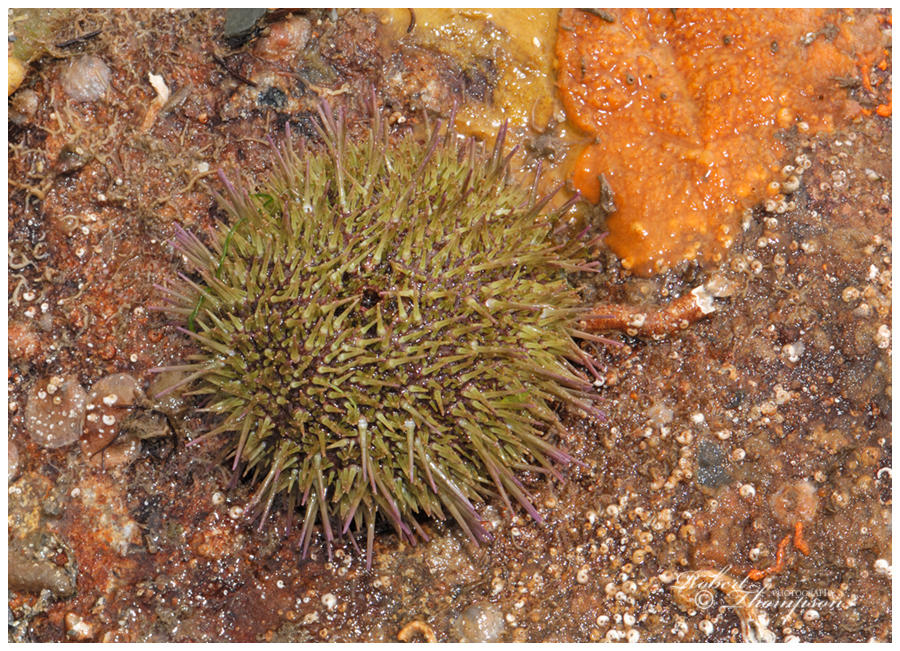
Green Sea Urchin Psammechinus miliaris
A round, flattened urchin that’s normally found on rocky shores, usually under stones and boulders.
Finally, be mindful of tide times. It’s easy to get engrossed and forget how quickly an incoming tide can reach you in certain places. Be careful where you put your stuff. Don’t try to cover everything at once target certain species and focus on them first!

